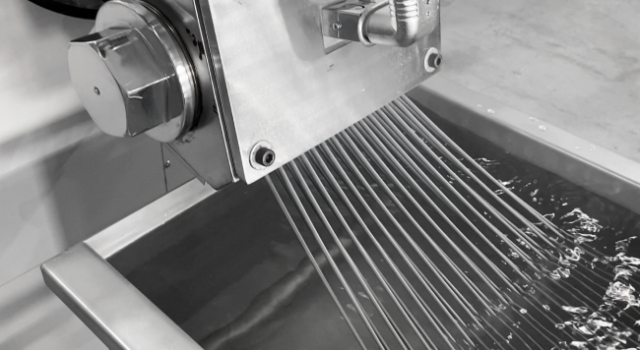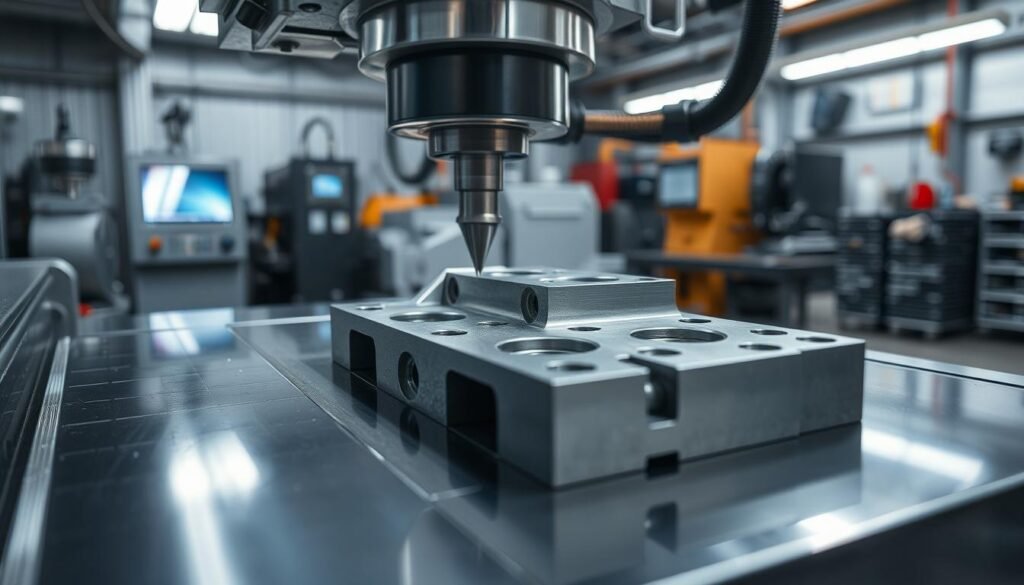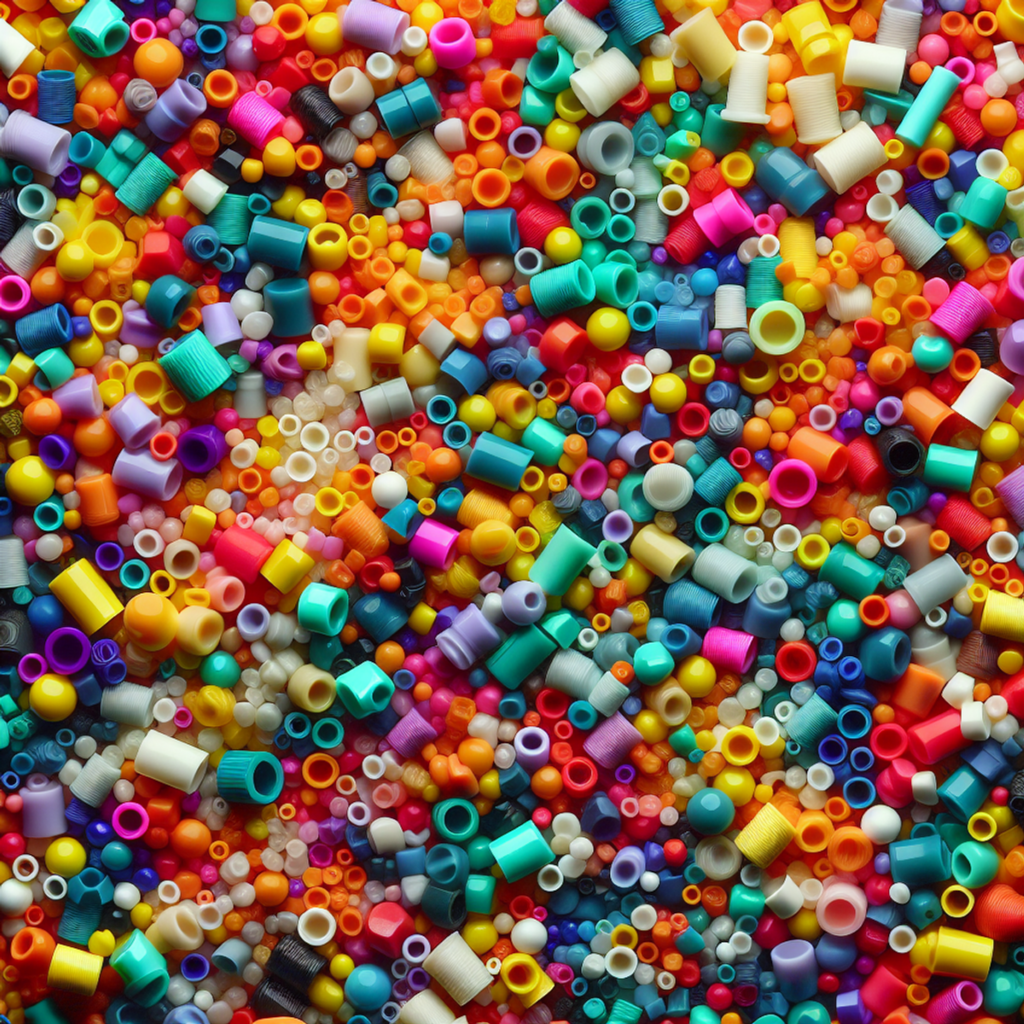Introduction
Recycling plastics has become a critical aspect of sustainable waste management. The process involves converting discarded plastic materials into reusable forms, reducing the environmental impact of plastic waste. Regeneration pelletizing is an advanced method in this recycling spectrum, transforming plastic waste into high-quality pellets that can be used to manufacture new products.
Identifying the plastics suitable for recycling through regeneration pelletizing is crucial to maximizing its benefits for both the environment and the economy. By selecting the right types of plastics, we can ensure:
- Enhanced quality of recycled products
- Increased efficiency in the recycling process
- Significant reductions in energy consumption and carbon emissions
Understanding which plastics can be processed effectively through regeneration pelletizing is pivotal. This knowledge not only supports a circular economy but also conserves natural resources and promotes sustainable development.
“Recycling correctly identified plastics through regeneration pelletizing contributes to a greener planet and robust economic growth.”
Understanding Different Plastic Types
Identifying plastics accurately is crucial in the recycling process, especially for regeneration pelletizing. Plastics are categorized into different types based on resin codes, which help determine their recyclability and appropriate processing methods.
Resin Code System
Plastics are classified using a resin identification code (RIC), a system developed by the Society of the Plastics Industry. These codes range from 1 to 7 and are typically found on the bottom of plastic containers. Here’s a brief overview:
- PET (Polyethylene Terephthalate)
- Commonly used for beverage bottles and food containers.
- Highly recyclable and often used in textile fibers and packaging materials.
- HDPE (High-Density Polyethylene)
- Found in milk jugs, detergent bottles, and grocery bags.
- Known for its strength and ease of recycling.
- PVC (Polyvinyl Chloride)
- Utilized in pipes, medical equipment, and vinyl flooring.
- Recycling is less common due to chlorine content and potential environmental hazards.
- LDPE (Low-Density Polyethylene)
- Used for plastic bags, shrink wraps, and squeezable bottles.
- Recyclable but less frequently accepted by curbside programs.
- PP (Polypropylene)
- Found in yogurt containers, straws, and bottle caps.
- Highly durable with good resistance to chemicals; increasingly recycled.
- PS (Polystyrene)
- Used in disposable coffee cups, plastic food boxes, and cutlery.
- Difficult to recycle due to its brittleness and tendency to fragment.
- Other (Including Polycarbonate, Nylon)
- Includes various other plastics like bioplastics or multi-layered materials.
- Recycling varies widely depending on the specific plastic type.
Importance of Distinguishing Plastic Types
Understanding these resin codes is essential for several reasons:
- Quality Control: Ensuring that only compatible plastics are processed together prevents contamination that could degrade the quality of the recycled product.
- Efficiency: Proper sorting reduces time and costs associated with additional separation processes during recycling.
- Environmental Impact: Correctly identifying recyclable plastics minimizes landfill waste and enhances resource recovery efforts.
Recycling mixed plastic types requires advanced sorting technologies to separate different plastics before regeneration pelletizing can occur effectively. For example, automated systems using infrared sensors can distinguish between various plastics based on their spectral signatures.
Practical Application
In practice, recognizing these resin codes allows facilities to streamline their operations:
- Collection: Plastics sorted by type at collection points can be directed to appropriate recycling streams immediately.
- Processing: Regeneration pelletizing relies on consistent input material quality; hence pre-sorted plastics ensure uniformity in the final pellets produced.
- End Products: Depending on the plastic type recycled, end products can include new packaging materials, construction components, or textile fibers, contributing to a circular economy.
By understanding different plastic types through their resin codes and their significance in the recycling process, you can better appreciate how vital proper sorting is to successful regeneration pelletizing. This knowledge not only supports environmental sustainability but also boosts economic efficiency within the recycling industry.
Plastic Recycling Methods
Recycling plastics involves several techniques, each with its own advantages and limitations. The two primary methods are mechanical recycling and chemical recycling.
Mechanical Recycling
Mechanical recycling is the most common method used to process plastic waste. This technique involves:
- Collection and Sorting: Plastics are collected from various sources like households, industries, and commercial establishments. They are then sorted based on resin codes, color, or type.
- Shredding: The sorted plastics are shredded into smaller pieces to facilitate easier handling and processing.
- Cleaning: Shredded plastics undergo a cleaning process to remove contaminants such as labels, adhesives, and residues.
- Melting and Pelletizing: Cleaned plastic fragments are melted and extruded into pellets, which can be used as raw material for manufacturing new products.
Advantages of mechanical recycling include:
- Lower energy consumption compared to producing new plastics
- Reduced environmental footprint
- Preservation of the material’s original properties
However, mechanical recycling has limitations such as degradation of plastic properties over multiple cycles and challenges in sorting mixed or contaminated plastics.
Chemical Recycling
Chemical recycling offers an alternative approach by breaking down plastic waste into its chemical components through processes like pyrolysis, gasification, or depolymerization. Key steps include:
- Depolymerization: Plastics are heated to break down polymer chains into monomers or other chemicals.
- Purification: Resulting chemicals are purified to remove impurities and contaminants.
- Repolymerization: Purified chemicals are reassembled into new polymers that can be used to manufacture fresh plastic products.
Advantages of chemical recycling include:
- Ability to handle mixed and contaminated plastics
- Potential for infinite recyclability without property degradation
- Production of high-quality raw materials
Chemical recycling is generally more energy-intensive and costly than mechanical recycling but offers greater flexibility in terms of input materials.
Regeneration Pelletizing in Mechanical Recycling
Regeneration pelletizing is a specialized form of mechanical recycling where collected plastic waste is transformed into pellets that serve as raw materials for new products. Its relevance lies in:
- Suitability for Various Plastic Types: Plastics with resin codes 1 through 7 can undergo regeneration pelletizing if properly sorted and cleaned.
- Maintenance of Material Properties: This method helps retain the essential properties of plastics over multiple processing cycles.
- Environmental Benefits: Significant energy savings, water savings, and reduction in carbon footprint make it an eco-friendly option.
Regeneration pelletizing involves stages such as shredding, metal removal, drying, pelletizing, heating, and vaporization in an oxygen-starved environment. The resulting pellets are utilized to create new circular plastic products.
Plastics Suitable for Regeneration Pelletizing
Identifying which plastics are suitable for regeneration pelletizing is crucial. Certain types of plastics possess specific properties that make them ideal candidates for this recycling method.
Key Characteristics of Regeneration-Friendly Plastics
- Thermal StabilityPlastics that can withstand multiple heating and cooling cycles without significant degradation are preferred. This ensures the material retains its quality and performance over repeated processing.
- Chemical ResistancePlastics with high chemical resistance maintain their structure and functionality even when exposed to various chemicals during the recycling process. This quality is vital for ensuring the durability of the regenerated pellets.
- Mechanical StrengthThe ability to endure mechanical stress without breaking down is essential. Plastics that retain their tensile strength, flexibility, and impact resistance after being processed multiple times are highly suitable for regeneration pelletizing.
- Purity and Low Contamination LevelsContaminants can disrupt the recycling process and reduce the quality of the final product. Plastics that are easier to clean and sort, or naturally less prone to contamination, are more desirable for regeneration pelletizing.
Types of Plastics Commonly Used
- Polyethylene Terephthalate (PET)Resin Code: 1
- Properties: High clarity, excellent barrier properties, good impact resistance.
- Applications: Beverage bottles, food containers.
- PET’s ability to maintain its properties after multiple recycling cycles makes it a prime candidate for pelletizing.
- High-Density Polyethylene (HDPE)Resin Code: 2
- Properties: Stiffness, toughness, chemical resistance.
- Applications: Milk jugs, detergent bottles.
- HDPE’s robustness and low contamination levels enhance its recyclability through regeneration pelletizing.
- Polyvinyl Chloride (PVC)Resin Code: 3
- Properties: Versatility, chemical stability.
- Applications: Pipes, medical devices.
- While PVC can be recycled through pelletizing, its chlorine content necessitates careful handling to avoid environmental hazards.
- Low-Density Polyethylene (LDPE)Resin Code: 4
- Properties: Flexibility, resilience.
- Applications: Plastic bags, shrink wraps.
- LDPE’s flexibility allows it to be easily processed into pellets without losing significant properties.
- Polypropylene (PP)Resin Code: 5
- Properties: Durability, heat resistance.
- Applications: Automotive parts, yogurt containers.
- PP’s ability to retain its mechanical strength after recycling makes it suitable for regeneration pelletizing.
- Polystyrene (PS)Resin Code: 6
- Properties: Rigidity or foam-like properties depending on its form.
- Applications: Disposable cups, insulation materials.
- PS can be recycled into pellets but requires careful sorting to ensure purity and effectiveness.
- Other Mixed Plastics (Types 7+)These include various other polymers not classified under codes 1-6.
- Mixed plastics need specialized techniques but can still be transformed into useful products through pelletization processes.
Each type of plastic presents unique challenges and advantages during the regeneration pelletizing process. Identifying these key characteristics helps in optimizing the recycling operations and achieving higher quality outcomes in regenerated plastic products.
Common Challenges in Recycling Plastic for Regeneration Pelletizing
Recycling plastics through regeneration pelletizing presents several challenges that need to be addressed in order to optimize the process and enhance its efficiency.
1. Contamination Issues
One of the primary obstacles in regeneration pelletizing is the problem of contamination. Plastics often come mixed with various impurities such as:
- Organic residues: Food particles or organic materials can cling to plastic waste, complicating the recycling process.
- Inorganic materials: Dirt, metals, and other non-plastic substances can contaminate the plastic stream.
- Mixed polymers: Different types of plastics may get mixed together, which can disrupt the recycling process since each type requires specific handling.
Contaminants must be meticulously removed to ensure the quality of the recycled pellets. This often involves multiple cleaning and sorting stages, which are labor-intensive and costly.
2. Technological Constraints
Technological limitations also pose significant challenges. The current technologies used in regeneration pelletizing have certain drawbacks:
- Limited Sorting Capabilities: Advanced sorting technologies are required to efficiently separate different types of plastics. However, these technologies are expensive and not universally available.
- Processing Limitations: Not all plastics can withstand multiple cycles of processing without degrading. For instance, while some plastics like PET (Polyethylene Terephthalate) maintain their properties well, others may lose their structural integrity.
These constraints make it difficult to consistently achieve a high-quality end product.
3. Economic Viability
The economics of recycling plastic for regeneration pelletizing also presents challenges:
- High Initial Costs: Setting up a facility equipped with advanced sorting and processing technology involves substantial capital investment.
- Market Fluctuations: The market value of recycled pellets can be volatile, influenced by the price of virgin plastics and fluctuations in demand for recycled materials.
Balancing costs and returns remains a constant challenge for businesses involved in regeneration pelletizing.
4. Regulatory Hurdles
Compliance with environmental regulations adds another layer of complexity:
- Stringent Standards: Many countries have strict standards for recycled products to ensure they meet safety and quality requirements.
- Documentation and Reporting: Maintaining extensive documentation and reporting on recycling processes to comply with regulations can be burdensome.
Navigating these regulatory landscapes requires thorough planning and resources.
5. Technological Innovations Lagging Behind
Despite advancements in recycling technologies, innovation in regeneration pelletizing still lags behind compared to other sectors:
- Research Gaps: There is still much to learn about how different types of plastics behave during multiple recycling cycles.
- Slow Adoption Rates: Adoption of newer technologies is slow due to high costs and risk aversion among industry players.
Investing in research and incentivizing early adoption could help overcome these technological barriers.
The challenges mentioned above must be addressed effectively to improve the efficiency and effectiveness of plastic recycling through regeneration pelletizing. By understanding these hurdles, stakeholders can develop strategies to mitigate them and enhance the overall process.
Additionally, it’s crucial to recognize that simply relying on recycling alone may not be enough to tackle the plastic waste crisis. As highlighted in
Future Prospects and Innovations
The future of plastic recycling relies on technology and innovative solutions to solve existing problems. One important method of recycling, called regeneration pelletizing, can greatly improve with these advancements.
Advanced Sorting Technologies
A key area of innovation is in better ways to sort plastics. This is crucial for effective regeneration pelletizing. New technologies like artificial intelligence (AI) and machine learning are being used in sorting systems to better identify and separate different types of plastic. These systems can tell the difference between plastics based on their codes, colors, and even chemical makeup, resulting in cleaner recycled materials.
Improved Contamination Control
Contamination is still a big issue in plastic recycling. We need better methods for washing and removing contaminants. New treatments and filters can help remove unwanted substances more effectively. For example, scientists are studying how enzymes can clean plastics by breaking down organic contaminants without harming the material itself.
Chemical Recycling Synergies
While regeneration pelletizing is a good way to recycle plastics mechanically, combining it with chemical recycling can solve some limitations. Chemical recycling breaks down plastics into their basic components, allowing us to recover materials that cannot be recycled mechanically due to contamination or damage. Using both methods together can make the recycling process better, so we can recycle more types of plastics.
Enhanced Material Properties
Another innovation focuses on making recycled materials better. By adding special substances to recycled pellets, we can improve their performance. Research on nanomaterials shows that they could make regenerated plastics stronger, more durable, and more versatile, which means they could be used in more ways.
Circular Economy Models
Using circular economy models helps us make things in a sustainable way and use them wisely. Companies are starting to design products with recycling in mind from the beginning. This approach makes it easier to take things apart and recycle them using methods like regeneration pelletizing. Laws that make companies responsible for their products throughout their whole life also encourage them to think about recycling.
Blockchain for Transparency
Being able to trust the recycling process is important. Blockchain technology can create permanent records of how plastic waste is recycled. This technology makes it easier to track where things come from, stops people from cheating, and helps people feel confident about using recycled products.
Renewable Energy Integration
Using energy is a big part of recycling plastics. If we can use renewable energy like solar or wind power when doing regeneration pelletizing, we can reduce the pollution that comes from making new plastic. Making machines that use less energy also helps us save power.
These innovations not only make regeneration pelletizing better but also help us manage plastic waste in a smarter way. We believe that by using these new ideas, we can recycle more plastic, protect the environment, and create economic opportunities.
By focusing on these cutting-edge solutions and innovations, the future of plastic recycling looks promising. The advancements discussed here offer practical pathways to overcoming current challenges while optimizing the benefits provided by regeneration pelletizing.
Conclusion
Recycling plastics through methods like regeneration pelletizing plays a crucial role in supporting a circular economy. This process not only helps conserve resources but also mitigates environmental pollution by transforming waste into valuable products. Identifying and utilizing plastics suitable for recycling ensures that the regeneration pelletizing method operates at its highest efficiency.
Educating yourself about the plastic recycling process contributes significantly to this cause. By properly sorting and disposing of plastic waste, you can help improve recycling rates and support sustainable practices within your community.
Understanding the importance of responsible plastic disposal and recycling encourages collective action toward a greener future. Engage with local recycling programs, stay informed about advancements in regeneration pelletizing technology, and take active steps to reduce plastic waste in your daily life.
Together, we can make a meaningful impact on our environment by committing to sustainable practices and supporting innovative recycling methods like regeneration pelletizing.
FAQs (Frequently Asked Questions)
What is the importance of identifying the right plastics for recycling through regeneration pelletizing?
Identifying the right plastics for recycling through regeneration pelletizing is crucial as it maximizes the benefits for the environment and the economy. It ensures that the recycling process is efficient and effective, leading to reduced waste and resource conservation.
How are plastics categorized into different types based on resin codes?
Plastics are categorized into different types based on resin codes, which are numerical symbols used to identify the type of plastic resin used in a product. This system helps in distinguishing between various plastic types and aids in the recycling process.
What are the various techniques available for recycling plastics?
There are several techniques available for recycling plastics, including mechanical recycling and chemical recycling. Mechanical recycling involves physical processes to transform plastics into new products, while chemical recycling uses chemical reactions to break down plastics into their original components for reuse.
What are the key characteristics that make a plastic type suitable for regeneration pelletizing?
Plastic types suitable for regeneration pelletizing possess key characteristics such as the ability to maintain their properties after multiple processing cycles. These plastics can be effectively recycled through regeneration pelletizing without significant degradation in quality.
What are some common challenges faced during the recycling process for regeneration pelletizing?
Common challenges during the recycling process include contamination issues, where impurities affect the quality of recycled plastics, and technological constraints that limit the efficiency of regeneration pelletizing. Overcoming these challenges is essential for sustainable plastic recycling.
What are some potential solutions and advancements that can drive the growth of regeneration pelletizing in the future?
Potential solutions and advancements that can drive the growth of regeneration pelletizing include innovative technologies to address contamination issues, improved sorting and processing methods, and increased awareness about responsible plastic disposal. These developments can contribute to a more sustainable future for plastic recycling.






